Space has been an important source of military capabilities for the last 60 years, and it is only growing more critical. I've touched on several aspects of military spaceflight in the my writing where they've interacted with other subjects, but it seems worth taking a look more specifically at the history and development of military spaceflight, and the various systems in use, both in the past and today.
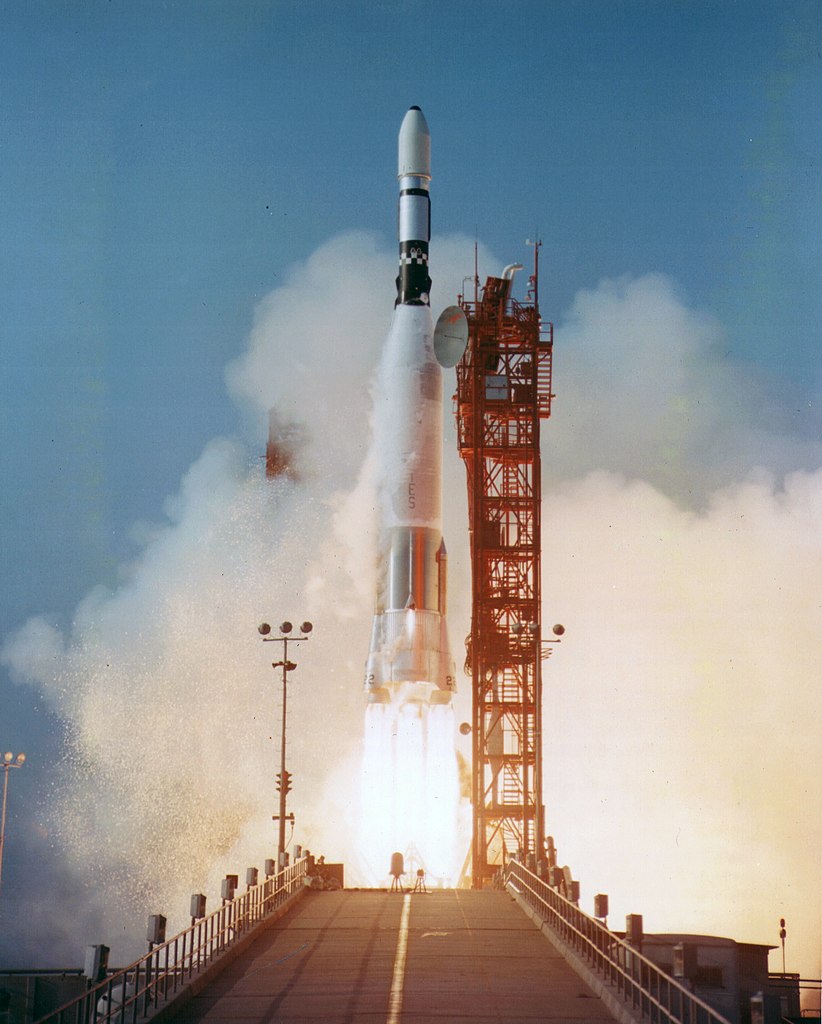
SPACE!
But we need to start with a very brief introduction to spaceflight and orbits.1 Getting into space itself isn't that hard. It's 100 km straight up, which means that, neglecting air resistance, you need to be going about 1,400 m/s to get there, or about Mach 4. But you'll barely brush space, then come straight back down, which generally isn't what you want. And that brings us to orbits. The basic insight behind an orbit is that if you go sideways at the right speed, the Earth's surface will fall away below you at the same rate you're falling, allowing you to fall around it forever. If you're in Low Earth Orbit (LEO, altitude below 2,000 km or so) then this is around 7.5 km/s, and you can expect to go around Earth every 90 minutes-2 hours. At higher altitudes, gravity is lower, and you don't need to go as fast. For instance, at an altitude of 35,786 km, you only need to go about 3 km/s, and the orbital period is exactly one day. This is called Geostationary Orbit, because a satellite in this orbit stays stationary relative to the Earth's surface, an extremely useful property we will come back to later.
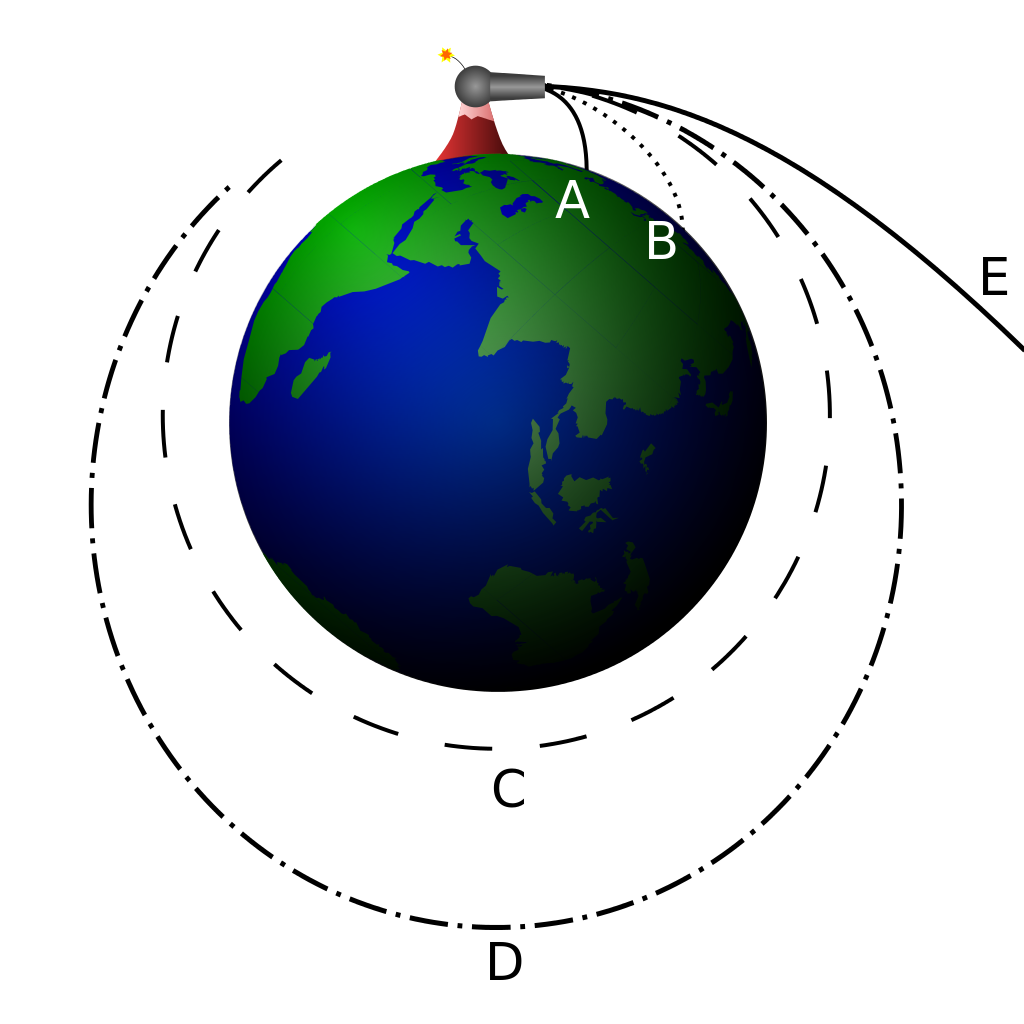
An illustration of what happens at various orbital speeds
If you go faster than the speed required for a circular orbit, then the surface falls faster than you do and you gain altitude and lose speed. If you're slower, then the reverse happens. And eventually, you'll be in the spot where the other trade is going on. As a result, all orbits form an ellipse, endlessly trading speed and altitude. Or at least almost all orbits being discussed here. If the bottom of the orbit is too low, the atmosphere (and possibly the Earth's surface) will mess up the rest of it. This is often of extreme military relevance, but is out of scope here. If you go really fast (escape velocity, about 11 km/s in LEO), then you'll leave Earth's gravity entirely, and end up orbiting the sun. This is rarely of military relevance.2
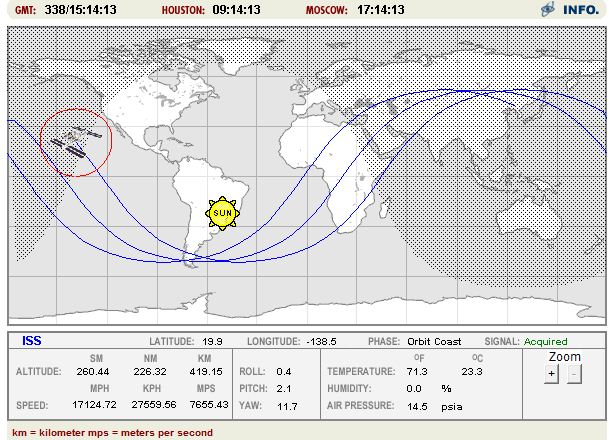
A two-orbit ground track of the ISS, inclination 51.5°
But orbits are just a neat trick until you put something useful in one, and the most obvious thing to do is to send up a camera and take a look at what your enemies are up to as it flies overhead. If you did this within the atmosphere, they would be well within their rights to shoot you down, but if you're in space, then anything you can see is fair game.3 So we can just set up the orbit so that it goes over the place we want to look at, and then we'll get a look every couple hours, right? Unfortunately, orbital mechanics are not so kind, and we run into two related problems. First, as the Earth rotates, the orientation of the orbit remains fixed in space. If a satellite is in a 2-hour orbit, it will find that after it completes one orbit, the point below it is 30° west of where it was at the start of the orbit. Or to put it another way, the satellite's groundtrack moves west at 15° an hour. Second, physics dictates that the plane of the orbit has to pass through the center of the Earth, so you can either spend all of your time over the equator or accept that you'll be at an angle to it. The angle at which the orbit crosses the equator is called the inclination, with an equatorial orbit having an inclination of 0°. Conveniently, the maximum latitude (both north and south) that an orbit passes over is equal to the inclination. The resulting groundtrack looks like a sine wave, shifted westward with each orbit. As a result, a satellite can generally pass over a given point no more than twice a day, and it won't reach any point higher than its inclination.
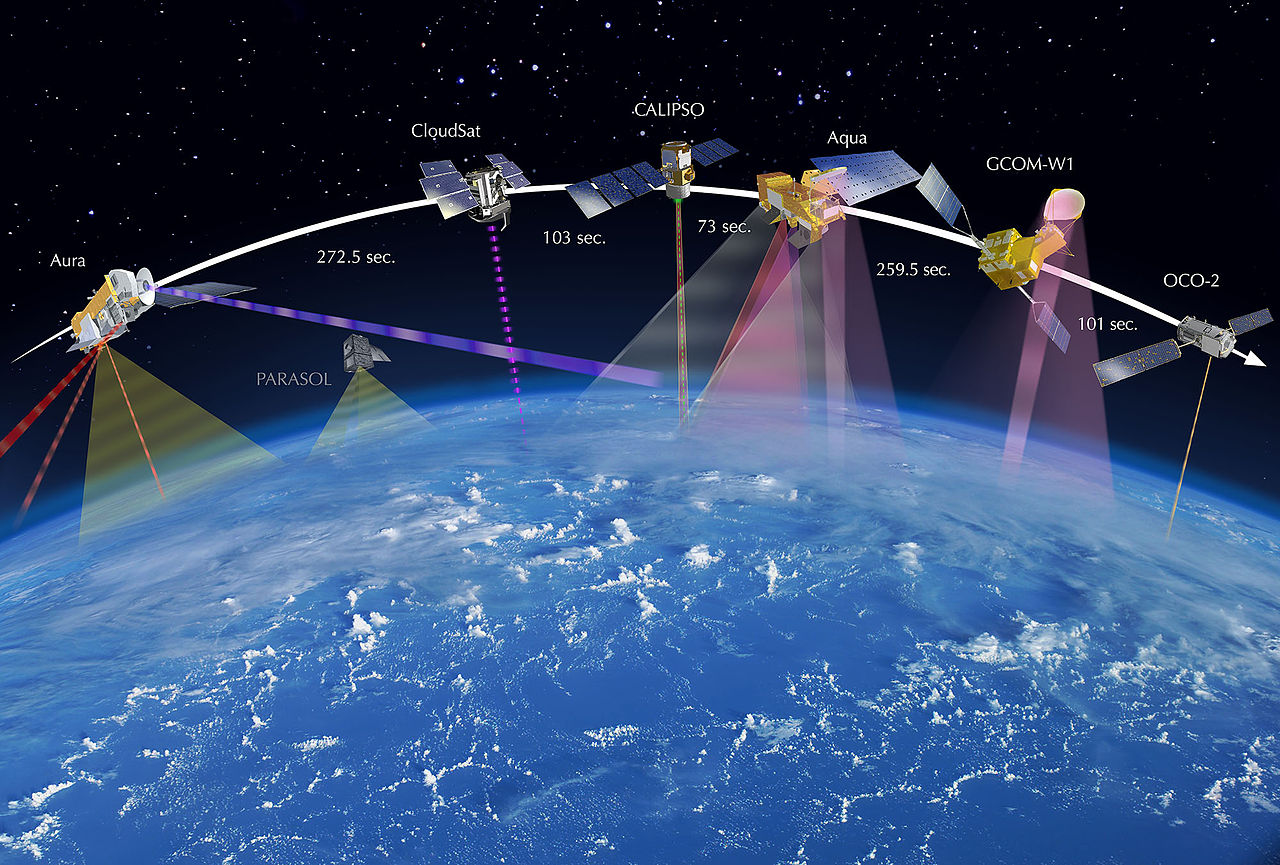
All of this leads to a simple conclusion: if we're going to spend a ton of money putting a fancy camera in space, we probably want to be able to see lots of places, which in turn means a high inclination. And at this point, we get a fun trick of orbital mechanics. There exists a specific type of orbit, known as a sun-synchronous orbit, that uses witchcraft so that the satellite passes over the equator at local noon/midnight (or any other given time pair) on each orbit, and the inclination for this orbit is between 97° and 100°, depending on altitude.4 This is very useful if you're trying to use a camera, as it means you see all of the interesting bits of Earth's surface and you have consistent lighting conditions on each pass. Typically, these orbits are either set up for 10:30 AM/PM passes5 or for dawn/dusk passes, depending on exactly what the satellite is doing.
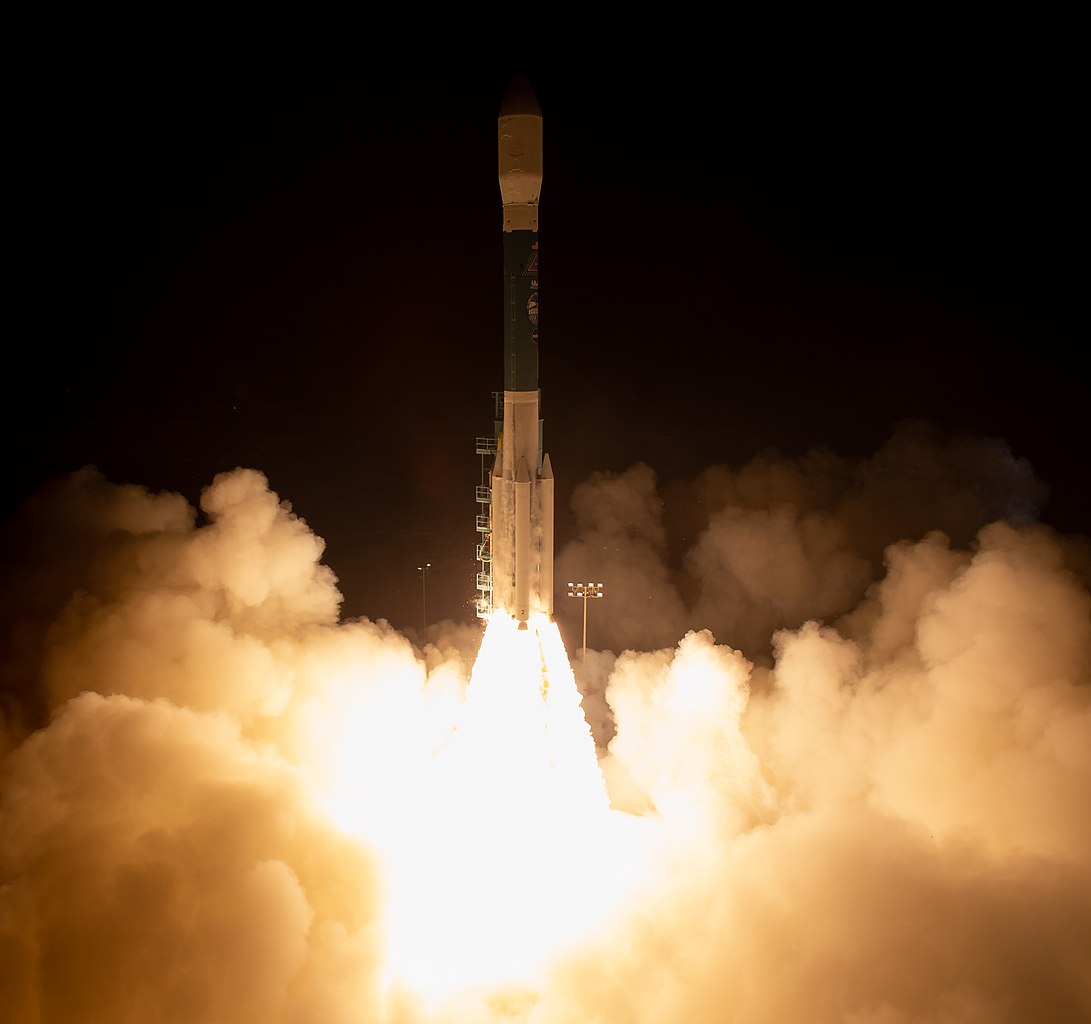
Of course, it's also worth noting that satellites don't magically appear in orbit, much though we might wish them to. Instead, we have to strap them onto giant rockets, which we call boosters because it sounds cool. Almost all early boosters were based on ballistic missiles, and one of the reasons that Sputnik so panicked the West was that any rocket capable of placing a ton of satellite in orbit could also place 5 tons of nuclear weapon on a trajectory for Washington or New York.6 The biggest problem is that even getting something into LEO requires about 9.5 km/s7 of delta-V,8 and for complicated rocket science reasons, it's hard to get a single rocket to give you more than 6-7 km/s of delta-V. The solution is staging, where you build a small rocket that can give the satellite 5 km/s of delta-V, then mount that on top of a bigger rocket that has 4.5 km/s of delta-V. When the big rocket is used up, you throw it away and light the small rocket.
But this is all quite wasteful, and so rocket scientists have to be experts at shaving off delta-V where possible. One good place to get it is from the Earth's rotation. If you want to go into an orbit with a relatively low inclination, you take off going east, and the closer to the equator you are, the faster you start off going. This is why the main US launch center is at Cape Canaveral, which is fairly far south and has a big stretch of water to the east for rocket bits to land in without harming anyone other than some fish, and shaves about 500 m/s off the required delta-V. The problem comes if you are trying to get into a polar orbit, because in that case, the Earth's rotation doesn't help you much. Also, for Cape Canaveral specifically, taking off into a polar orbit involves overflying either the Carolinas (who we like) or Cuba (who will complain if we drop rockets on them). So American rockets going into polar orbits launch out of Vandenberg AFB, near Los Angeles, where they can fly south over the Pacific. But regardless of where the launch is, getting into a polar orbit takes more delta-V than an equatorial orbit, which in practical terms means that a given rocket can carry less payload there. For instance, an Atlas I could put about 5600 kg to a 28° 185 km orbit from Florida, but only 4800 kg to a 97° 185 km orbit from Vandenberg. Note that higher orbits also require more delta-V, with a consequent reduction in payload. For instance, our Atlas I could only put about 1040 kg in geosynchronous orbit.9
This account of the basics of spaceflight may seem a bit abbreviated, and with good reason. There are lots of people who have done extensive work on explaining this, and it didn't seem like an area where I had a lot to add, so I stuck to what was strictly necessary to understand the stuff I'm trying for here. If you want more, I can recommend here for orbits, here for rockets, Atomic Rockets for general Sci-Fi stuff and Wikipedia's various pages. Physics of Space Security is a longer treatment focused on the military aspects for non-science types.
But with all of that out of the way, we can finally turn to the main thrust of this series, starting with a look at the eyes in the sky that are recon satellites.
1 Much of what follows is going to be very simplified, and I plan to ignore entire topics I have sat through lectures on in college. ⇑
2 For those who are still confused by what an orbit is and how it works, see here and here. For those who want a mid-level introduction to orbital mechanics with a Sci-Fi flavor, see here. For those who want to play with these mechanics on your own, see here. ⇑
3 Interestingly, it is not at all clear where the dividing line between these two is. It's very hard to get atmospheric vehicles past about 30 km, while orbits that go lower than 100 km decay rapidly, so there has never been much reason to figure out the exact division. ⇑
4 Yes, inclination can go past 90°. In essence, the direction of the orbit is mostly over the poles, but also a little bit backwards relative to the Earth's rotation. ⇑
5 This gives good lighting conditions, and enough shadow that an analyst can figure out the height of things ⇑
6 Of course, the US assumed the Soviets had a meaningful number of those rockets. We'll come back to that next time. ⇑
7 Actual orbital velocity is only 7.5 km/s or so, but you need the rest for getting to altitude, overcoming atmospheric drag and other rocket science stuff. ⇑
8 Rocket scientist for "How fast can this rocket go if I start it stationary in a gravityless vacuum and then run it until it's out of fuel?" ⇑
9 Numbers from a website run by someone who I think is a rocket scientist. ⇑


Comments
Another good space reference site is Mark Wade's http://www.astronautix.com/ I think's its the grand daddy originating in 1994. Cavet is that its not maintained anymore and might have some errors in fact.
Astronautix is great if you need to get details on a specific rocket/spacecraft. Somewhat less useful if you're looking to understand how spaceflight works.
I like that your Newton's Cannon illustration puts the cannon in England
I am glad you put note #4 in as, for a moment, I was scratching my head.
Why would they wish to do this though? I get the orbit being slightly opposite the earth's rotation, but what benefit does that grant?
It's necessary to make the orbital mechanics witchcraft work for the sun-synchronous orbit. The wiki article linked will have the exact explanation, but in fairness, that's only of interest to people who are nerds about this stuff. Theoretically, you can get to 180 deg inclination, if you really want to, although the only people who might want to are Israel, because that's where the water is and where the potentially angry neighbors aren't.
Not so. The "cheapest" orbit is one with an inclination matching the latitude of the launch site. Inclinations higher than that are slightly more expensive in delta-V. But inclinations lower than it are massively more expensive, because you have to change the orbital plane after you're already moving at a significant fraction of orbital velocity. This was a major reason for e.g. putting the ISS into its quite highly inclined orbit, so that it would pass over Baikonur. Launches routinely incorporating "dog-leg" trajectories is a very recent phenomenon. (Air-launched boosters were particularly appealing to countries with access to oceanic airspace, so that the aircraft could fly to a lower latitude.)
But you can lower the Delta v by moving to a launch site closer to the equator, nothing you can do to help with a polar orbit.
Yes, you are technically correct. I was simplifying because this is a basic overview and I'm not aware of any launch sites at the poles.
There is the launch site at Pacific Spaceport on Kodiak Island, Alaska that is as close as the US ever got to a polar launch site, but the logistical difficulties (and terrible weather) have kept it from ever taking off as a primary launch site. Even further north is the University of Alaska's Poker Flats Launch range, but it specializes in suborbital flights using decommissioned SAM boosters (like Talos & Terrier) launched for science purposes, primarily to observe geomagnetic activity.
One thing that isn't mentioned explicitly, but in hindsight perhaps should have been, is that you can't launch directly into an orbit with an inclination lower than the latitude of the launch site. Because the inclination sets a limit on the latitudes a satellite will fly over, and you need your launch site to be under the satellite's path. So if you really want an equatorial orbit, you either need an equatorial launch site, or you need to do a separate maneuver after boosting into orbit. And the latter can be rather expensive(*).
For pure maximum payload, you want the lowest latitude where you have decent logistics and a clear range to the East, and you want to launch due East into the lowest inclination possible from that site.
But this is rarely of military interest, because military satellites have specific inclination demands and they're usually pretty high inclination so you don't much care about the Earth's rotation, just site logistics and launch azimuth restrictions. The one exception is satellites in geostationary orbit, which want to be over the equator or nearly so. But the amount of maneuvering you have to do to get to GEO, will almost bury a modest plane-change maneuver in the noise.
Yea, when going to GEO you can both plane-shift at apogee, where everything is slower and takes less delta-V, and merge the plane-shift with the circularization burn and enjoy triangle gain.
Even then you're still better off with an equatorial launch if you can manage it.
Equatorial orbits are more useful for civilian stuff though, especially manned flights where that's the only way to avoid the SAMA.